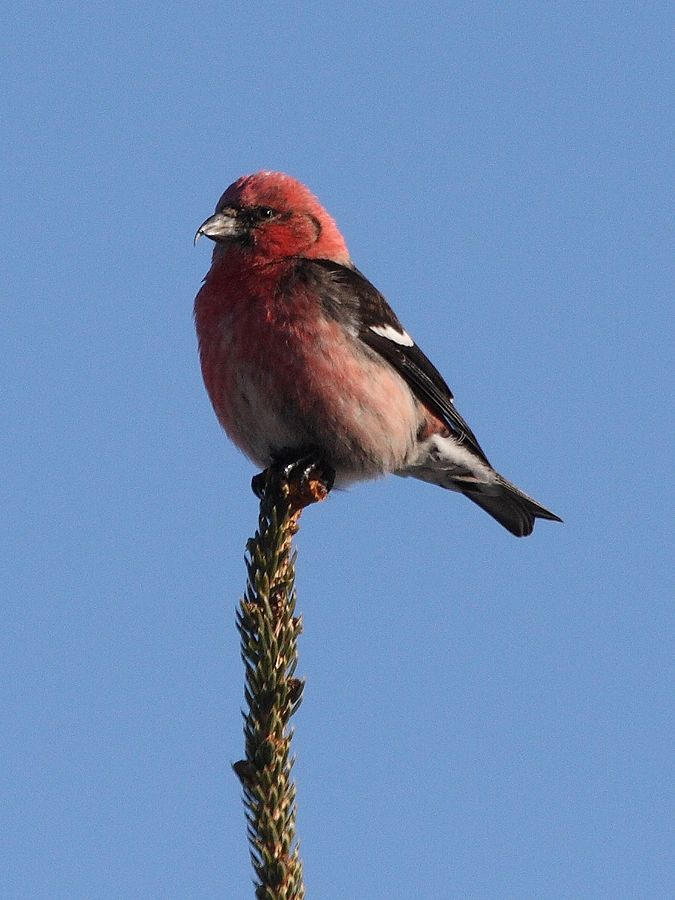Offer
Provide additional details about the offer you're running.
Provide additional details about the offer you're running.
Provide additional details about the offer you're running.

Feature Image By dominic sherony (White-winged Crossbill male) [CC BY-SA 2.0 (http://creativecommons.org/licenses/by-sa/2.0)], via Wikimedia Commons
Where to Find the White-winged Crossbill
The year-round range of the White-winged Crossbill covers most of Canada and Alaska. During the winter though, this species can be documented to take up residence in the United States, covering most of the northern states, but also reaching as far south as New Mexico and Nevada in the southwestern US. These birds are traditionally found in coniferous forests where large crops of spruce and tamarack cones can be located.
Identification
Considered a medium-sized bird, measuring anywhere between 15-17cm, these stocky male finches sport a pink body and head plumage during the winter months which turned into a deeper red during the summer months. The females, however, can be spotted with a breast and rump that varies from gray to yellow and green in colour. Both sexes are equipped with black wings with two large white wing bars and a thick, curved bill with crossed tips.
The white-winged crossbill molts their feathers every year in the fall. The reason for their pink appearance during the fall and winter months can be attributed to this as the red feathers of the males contain unpigmented barbules that mask the red and make the bird appear to be pink in colour. Over time, these barbules wear off and the red again shines through in the spring and summer months.
Vocals
The song of the white-winged crossbill is simply a series of trilled combined with a number of chirps and warbles, while their call is a quick and dry “chut-chut-chut-chut”.
High Quality Blend